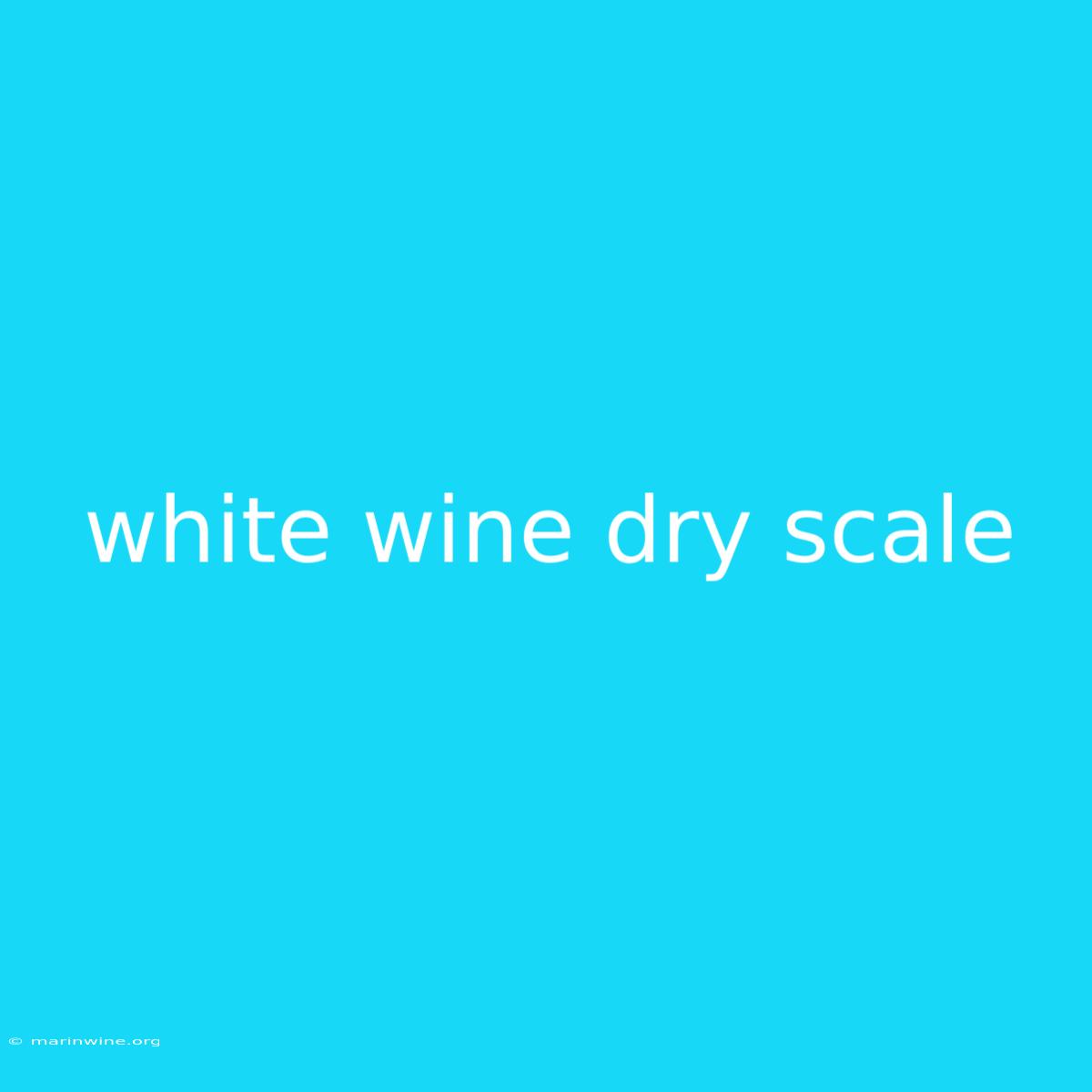Uncorking the Secrets: Decoding the Dryness Scale for White Wine
Have you ever wondered what exactly "dry" means when describing a white wine? It's a term thrown around often, but the nuances of dryness in white wine can be quite complex. This article will guide you through the dry white wine scale, helping you understand the different levels of sweetness and how to choose the perfect bottle for your taste.
Why This Matters: Understanding the dryness scale is crucial for any wine lover. It empowers you to choose wines that align with your personal preferences, navigate wine lists with confidence, and truly appreciate the unique qualities of each varietal.
Key Takeaways of Dry White Wine Scale
| Dryness Level | Description | Example Wines |
|---|---|---|
| Bone Dry | No perceptible sweetness. Crisp, refreshing, and often mineral-driven. | Sauvignon Blanc, Pinot Grigio, Riesling (dry style) |
| Dry | A hint of sweetness may be present, but the overall flavor profile is still dominated by acidity and fruitiness. | Chardonnay, Albariño, Vermentino |
| Medium Dry | A balance of sweetness and acidity. Offers a delicate sweetness without being overly fruity. | Riesling (semi-dry style), Gewürztraminer |
| Off-Dry | Noticeably sweet, with a balance of sweetness and acidity. Often described as "fruity" or "honeyed." | Moscato, Chenin Blanc, Riesling (sweet style) |
Dry White Wine Scale Explained
The dry white wine scale is a spectrum, not a rigid set of rules. Winemaking techniques, grape varieties, and climate all influence the final dryness level.
Here's a breakdown of the key aspects:
Acidity: The Foundation of Dryness
Acidity is the backbone of most dry white wines. It provides a crisp, refreshing taste and balances out any perceived sweetness. Wines with higher acidity tend to be more bone-dry or dry.
Residual Sugar: The Sweetness Factor
Residual sugar refers to the amount of sugar left in the wine after fermentation. In dry wines, the fermentation process is allowed to complete, leaving minimal residual sugar. Off-dry wines, on the other hand, have more residual sugar, resulting in a noticeable sweetness.
Grape Varieties: A Role in Dryness
Certain grape varieties are naturally more acidic and thus produce drier wines. For example, Sauvignon Blanc and Pinot Grigio are known for their high acidity and bone-dry styles. Others, such as Riesling, can produce a range of dryness levels depending on winemaking techniques.
Finding Your Dryness Sweet Spot
Choosing the right dryness level is a matter of personal preference. Here are some tips for navigating the dry white wine scale:
- Start with bone-dry or dry styles: These wines offer the purest expression of the grape's flavor and are often excellent with food.
- Experiment with off-dry options: If you enjoy a touch of sweetness, explore medium-dry or off-dry wines.
- Pay attention to the label: Look for terms like "dry," "semi-dry," or "off-dry" on the wine label to get an indication of its sweetness level.
- Ask for recommendations: Wine retailers or sommeliers can provide personalized recommendations based on your preferences.
FAQs about Dry White Wine
Q: What is the difference between "dry" and "sweet" wine? A: Dry wine has minimal residual sugar, resulting in a crisp, refreshing taste. Sweet wine, on the other hand, has a noticeable amount of residual sugar, making it taste sweeter.
Q: Are all white wines dry? A: No, not all white wines are dry. Some varieties, like Moscato and Riesling, can be produced in both dry and sweet styles.
Q: How do I know if a white wine is dry? A: Look for terms like "dry," "semi-dry," or "off-dry" on the wine label. You can also taste the wine and see if you perceive any sweetness.
Q: What foods pair well with dry white wine? A: Dry white wines are versatile and pair well with a wide range of foods, including seafood, chicken, salads, and cheese.
Tips for Choosing the Perfect Dry White Wine
- Consider the occasion: For a light and refreshing drink, choose a bone-dry or dry style. For a special occasion, explore a more complex, medium-dry wine.
- Think about the food: Dry white wines are excellent with lighter dishes like seafood, salads, and poultry.
- Experiment with different varieties: There are many delicious dry white wines to discover, so don't be afraid to try new things.
- Explore different regions: Dry white wines are produced worldwide, each region bringing unique characteristics to the style.
Summary of Dry White Wine Scale
The dry white wine scale is a valuable tool for understanding the different levels of sweetness in white wine. By understanding the key aspects of acidity, residual sugar, and grape varieties, you can navigate the world of dry white wines with confidence and choose the perfect bottle for your taste. So, the next time you find yourself at the wine shop, don't be afraid to ask for a dry white wine - you might just discover your new favorite bottle.

